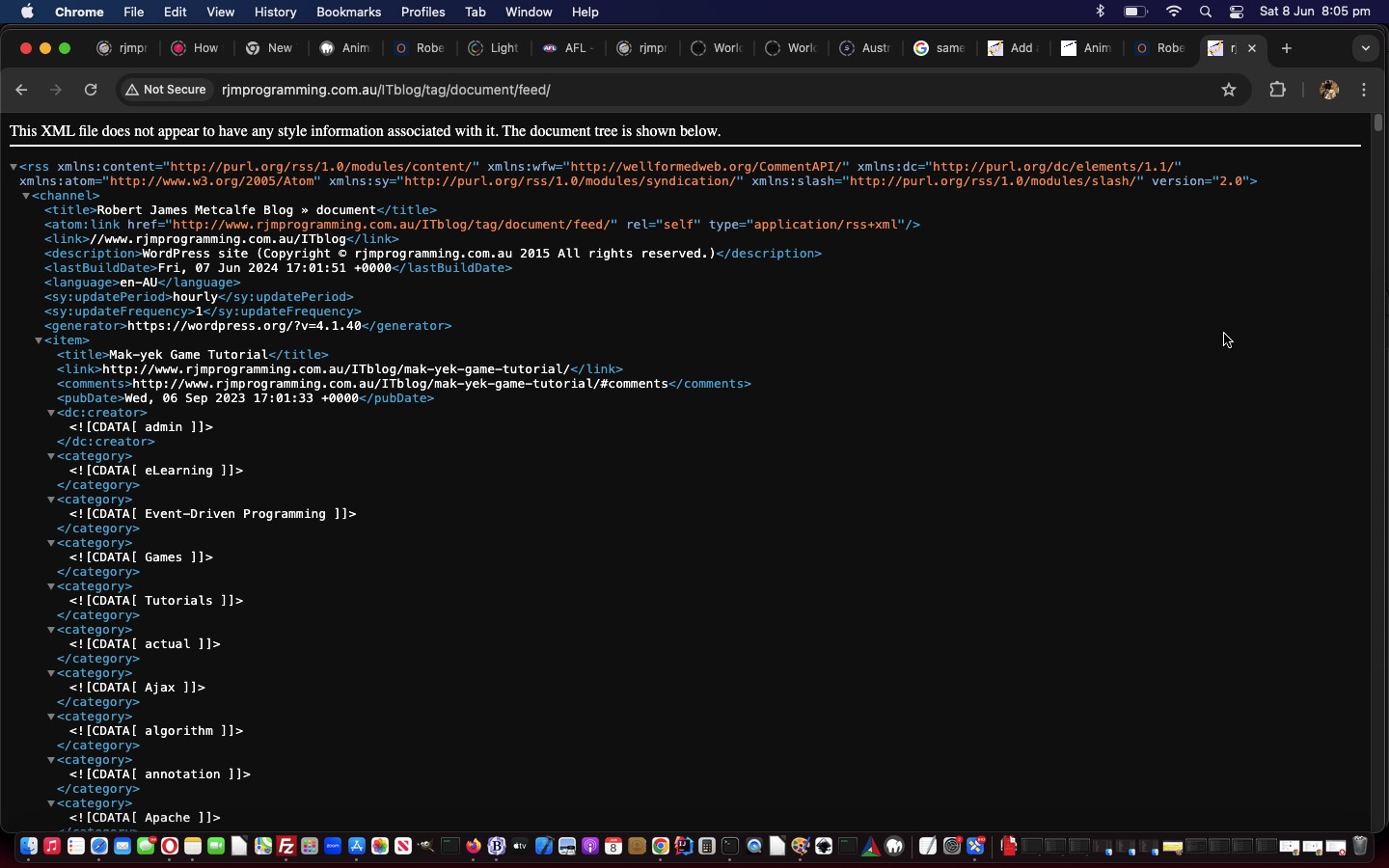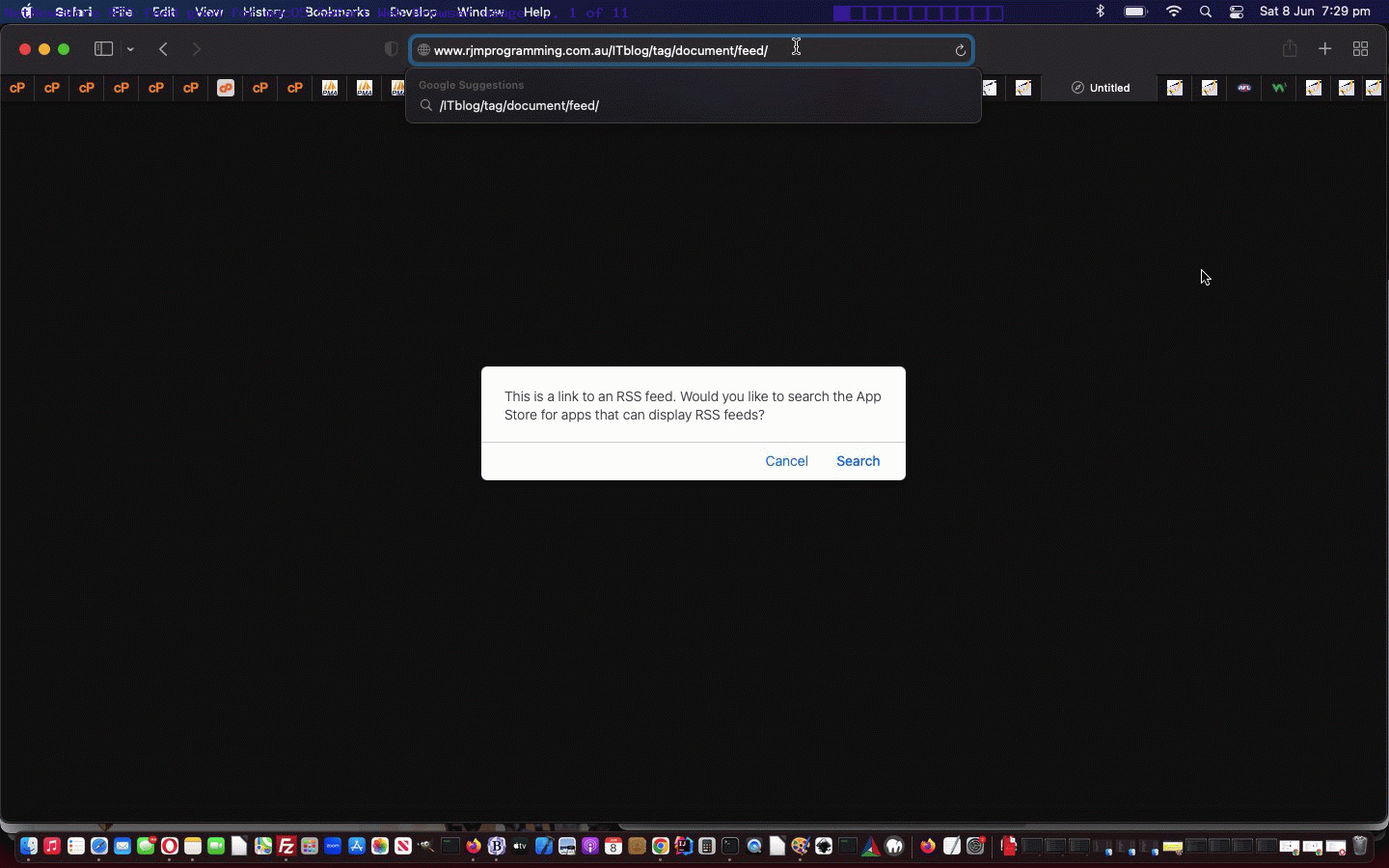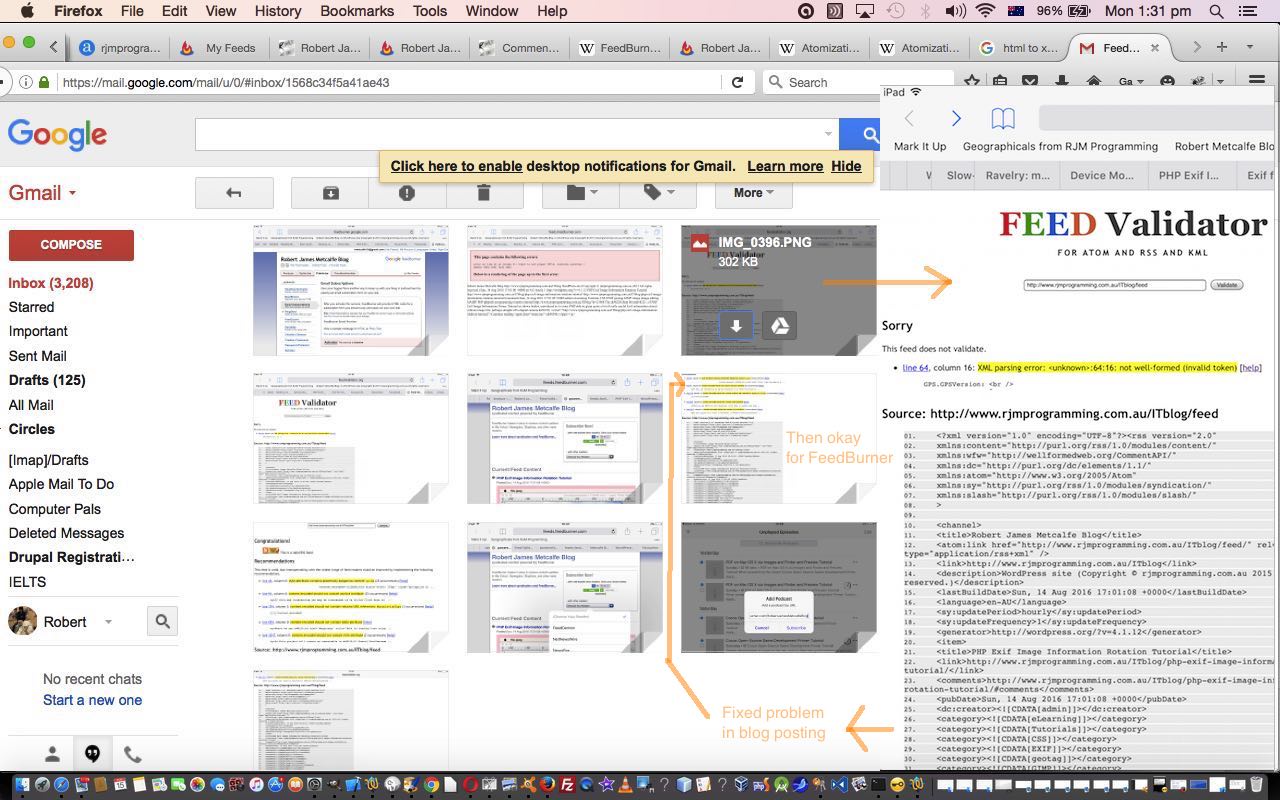In the same “RSS feed” feel of FeedBurner Web Feed Primer Tutorial, the other day …
- on this macOS MacBook Air … using …
- Safari web browser … we had occasion to type into the address bar …
https://www.rjmprogramming.com.au/ITblog/tag/document/feed/- to which we received the advisory message …
This is a link to an RSS feed. Would you like to search the App Store for Apps that can display RSS feeds?
… different to the (less worrying) behaviour on Google Chrome …

So we went looking for a free macOS and Safari RSS feed reader and came up with the great looking NetNewsWire for this purpose, thanks. It looks great!
Previous relevant FeedBurner Web Feed Primer Tutorial is shown below.
We’ve opened a FeedBurner web feed management provider account for the Robert James Metcalfe Blog, our WordPress 4.1.1 blog at this link. Let’s see what Wikipedia says about FeedBurner, which Google acquired on 3rd June 2007, here and below …
FeedBurner is a web feed management provider launched in 2004.[1] FeedBurner was founded by Dick Costolo, Eric Lunt, Steve Olechowski, and Matt Shobe. Costolo is a University of Michigan graduate, and was CEO of Twitter from 2010 to 2015. FeedBurner provides custom RSS feeds and management tools to bloggers, podcasters, and other web-based content publishers.
Web feed management providers like FeedBurner are pretty important to bloggers because a lot of web traffic to blogs these days does not come from the user finding the blog news via their favourites or out of habit each day, but rather from “feeds” they have subscribed to, that they use the precis headline of to decide whether they want to read further on a topic of interest or disgust or whatever or what…everrrrrr.
It was fairly straightforward as a Google Gmail user to sign up for the Robert James Metcalfe Blog feed to be registered with FeedBurner. More or less just follow your nose with a visit to http://feedburner.com … but what was a bit surprising was the next day’s realization that just because some content looks okay in HTML it would necessarily be totally okay for FeedBurner which requires that content to validate in terms of XML data as well.
Now here is where the FeedBurner “Troubleshootize” tab functionalities called (for the Robert James Metcalfe Blog feed) …
… can come into their own to show you any potential problems.
If this was interesting you may be interested in this too.
If this was interesting you may be interested in this too.




